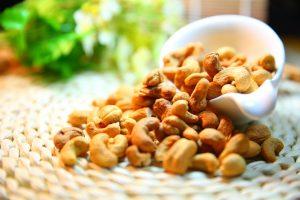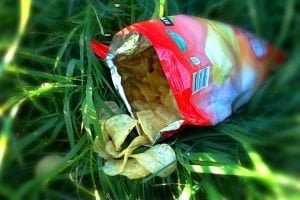
Processed Foods: Using NOVA to Categorize the Good, the Bad, and the Ugly
Table of Contents
Perhaps the #1 dietary advice ever given is to avoid processed foods— almost everything that has an ingredient list on the package. This recommendation is certainly a major tenet of holistic nutrition philosophy. But without processed foods, what is there to eat?
That is to say, all food is processed in some way. Chopping, salting, refrigerating, freezing, canning, shelling, pasteurizing, butchering, fermenting, steaming, and grilling are just some of the ways that plants and animals transform into ready to eat meals.
To say that all processed food is unhealthy and should be avoided is a misguided and myopic nutritional stance that ignores the importance and necessity of food processing techniques. Yet, it is important to distinguish that not all food processing techniques are created equal.
This week’s blog aims to provide some food for thought by exploring the degrees of food processing in order to shed light on a topic with more shades of gray than an E.L James novel. To start, let’s distinguish a few shades of food processing with a system known as NOVA.
NOVA: A Novel Way to Categorize Foods
NOVA (not an acronym, just a name) is a system designed by Brazilian researchers in 2009 that categorizes food based on its degree of processing. It qualifies the physical, chemical, and biological changes that foods go through once they are removed from their natural environment, making it a useful tool for food policy organizations and scientific researchers alike. The 4 groups of NOVA are as follows.
Group 1: Unprocessed or Minimally Processed
Group 1 foods include the edible parts of plants, animals, fungi, algae, and water. These foods are altered from their natural state by removal of inedible parts, drying, crushing, grinding, filtering, roasting, boiling, pasteurizing, refrigerating, freezing, or storing in containers. The purpose of group 1 processing is to extend shelf life or prepare them for use, such as the grinding of wheat berries to make flour or roasting coffee beans.
Group 2: Processed Culinary Ingredients
These foods are made by processes including pressing, refining, grinding, milling, or spray drying. Their purpose is to make products used in home or restaurant kitchens to prepare foods made from group 1 ingredients, not to be consumed on their own. Examples of group 2 foods include sugar made from cane or beets, honey, syrup, butter, olive oil, and cornstarch.
Group 3: Processed Foods
Processed foods are simple products made by cooking, preserving, fermenting, or canning ingredients from previous groups. They are designed to be more shelf stable and/or to modify or enhance the sensory qualities of the unadulterated foods. Salt, sugar, oil, or other foods in group 2 are the only additives included in these foods. Examples of group 3 processed foods include canned or jarred beans, vegetables, fruits, meats, and fish, salted or smoked meats, cheese, fresh baked bread, beer, and wine.
Group 4: Ultra-Processed Foods
NOVA’s final group consists of industrial food formulations that contain 5 or more ingredients. Typically, these foods contain substances not normally used in cooking, i.e. you won’t find them in a household kitchen or even recognize them as food. Examples of these ingredients include:
- Hydrogenated or esterified oils
- Hydrolyzed proteins
- Refined sugars and starches, such as high fructose corn syrup, maltodextrin, invert sugar, and many, many more
- Dyes or colors
- Color stabilizers
- Preservatives
- Non-nutritive sweeteners
- Emulsifiers
- Humectants
- Bulking, anti-bulking, anti-caking, firming or glazing agents
The purpose of the processes and ingredients in ultra-processed foods is to imitate or enhance the desirable qualities of foods from previous groups, to disguise unwanted characteristics of the product, and to lengthen their shelf-life indefinitely. The result is foods that are hyper-palatable, convenient, attractively packaged, cheap for consumers, and highly profitable for the companies who make them.
The Benefits of Food Processing
As you might guess, foods from the first three groups are not the targets of nutrition counseling. In fact, food processing is necessary to make food edible, prolong shelf life, and decrease food scarcity.
For example, some plants are poisonous unless they go through a bit of processing, such as cashews. Truly raw cashews contain an oil called urushiol on their shells, which is the same compound responsible for the itchy rash caused by exposure to poison ivy. Cashews, even those sold in the store as “raw”, are either roasted or steamed first to remove this toxic compound.

The development, refinement, and increase of scale of the processing techniques in groups 1-3 have improved food security, given foods the ability to travel, and allow for a wide variety of nutritious options in a variety of growing climates independent of the season.
Though foods from the first three groups provide for a diverse and satisfying menu (ask any natural food chef), the convenience, marketing, and extreme palatability of group 4 foods make them difficult to resist, even when we know they’re not the wisest choice.
What’s Wrong with Ultra-Processed Food?
If preservation techniques slow down microbial composition, ultra-processing seeks to eliminate it altogether, leaving a food product that can last on the shelves indefinitely. Not only that, ultra-processed foods are designed to be convenient, affordable, and highly palatable. Perhaps too palatable. So why is this a bad thing?
Well, these foods aren’t exactly associated with positive health outcomes. According to a recent narrative review of ultra-processed foods and health outcomes, 37 of the 43 studies included found that dietary ultra-processed food exposure was associated with at least one adverse health outcome, while no study reported a beneficial health outcome.
Indeed, a growing body of evidence suggests a link between the consumption of ultra-processed foods and poor diet quality, obesity, and increased risk of non-communicable diseases, including cardiovascular disease, cancer, and metabolic syndrome.
Research evaluating the connections between processed food intake and health is a relatively new field, as the NOVA classification system created a novel way to qualify dietary intakes based on the degree of processing of foods beginning in 2009. In that same year, the first and largest web-based cohort database began in France, the NutriNet-Santé study, which evaluates the connections between ultra-processed food intake and health status using the NOVA system.
NutriNet-Santé is an example of a cohort study, a common research design to evaluate the diet and lifestyle habits of a group of people over a long period of time. This study uses dietary questionnaires combined with analysis of sociodemographic factors, lifestyle, body measurements, physical activity, and health status.
Many research papers have been published using the results from this study, including this one that examines the correlations between processed food intake and cancer risk (the link also includes audio of an interesting interview with the researchers).
There’s no doubt that emerging research shows that diets high in ultra-processed food correlate with poor health outcomes, but the mechanism is much more difficult to pinpoint.
Hypotheses about Ultra-Processed Food
Though it’s fairly easy to grasp the concept that industrially processed food is not as good for us as fresh and minimally processed fare, proving exactly how and why these foods might cause harm is much more difficult. Several hypotheses have been put forward to explain.
Nutritional Inferiority
Ultra-processed foods tend to be higher in salt, sugar, and saturated fat, while lower in vitamins, minerals, and fiber. As a result of higher sugar content with less fiber, these foods raise blood sugar quickly yet don’t produce a strong satiety response, which may explain the tendency to overeat these foods. In addition, minimally processed fruits, vegetables, and other foods may be pushed out in favor of the more convenient and palatable ultra-processed foods, furthering poor diet quality.
Exposure to Harmful Additives and Packaging Materials
Though the FDA regards many food additives as GRAS, or generally recognized as safe, there often isn’t conclusive scientific proof that these additives don’t cause harm. Many controversial ingredients are found in ultra-processed foods and their packages, such as sodium nitrite, titanium dioxide, artificial colors, aspartame, and bisphenol A, including those that are marketed to children.
Neo-Formed Contaminants
Neo-formed contaminants are compounds formed during the process of creating the food, such as high heat or pressure techniques in combination with additives or even natural components of food. Examples of these potentially harmful by-products include heterocyclic amines, acrylamides, and benzo(a)pyrene.

Undesirable Consequences of Ultra-Processed Food
Not only is ultra-processed food consumption potentially detrimental to health, it is also harmful to the environment and local economies. Plastic debris continues to accumulate in the oceans and the majority of farmland is dedicated to monocrops and synthetic pesticides and fertilizers. Furthermore, only 10 companies dominate the economic landscape of the food industry, putting billions of dollars and lots of political power into the hands of these corporations.
I hope that this article shines some light on the positive and negative aspects of processed food and inspires you to avoid ultra-processed foods as much as possible in favor of minimally processed ingredients.
_________________________________________________________________________________________________________________
About the author
Karyn Lane is working towards her holistic nutrition certification in NTI’s Nutrition Therapist Master Program. She finds her chemistry degree a useful tool in her study of holistic nutrition and loves to treat herself as a laboratory for new recipes and cooking techniques. You can follow her on Instagram @feel.alive.nourishment.
About Nutrition Therapy Institute’s Holistic Nutrition Certification
Nutrition Therapy Institute (NTI) is a leader in holistic nutrition education. Since 1999, NTI has provided students with the highest quality in nutrition training by offering comprehensive holistic nutrition courses online and in-person to help students achieve thriving careers as holistic nutrition therapists in the field of holistic nutrition counseling and wellness. Interested in starting our holistic nutrition courses and earning your holistic nutrition certification? Attend an informational webinar to learn more by signing up HERE.
Images:
Image byKanishka Burnwal on Unsplash
Image by sunnysun0804 from Pixabay
Image by MabelAmber from Pixabay
